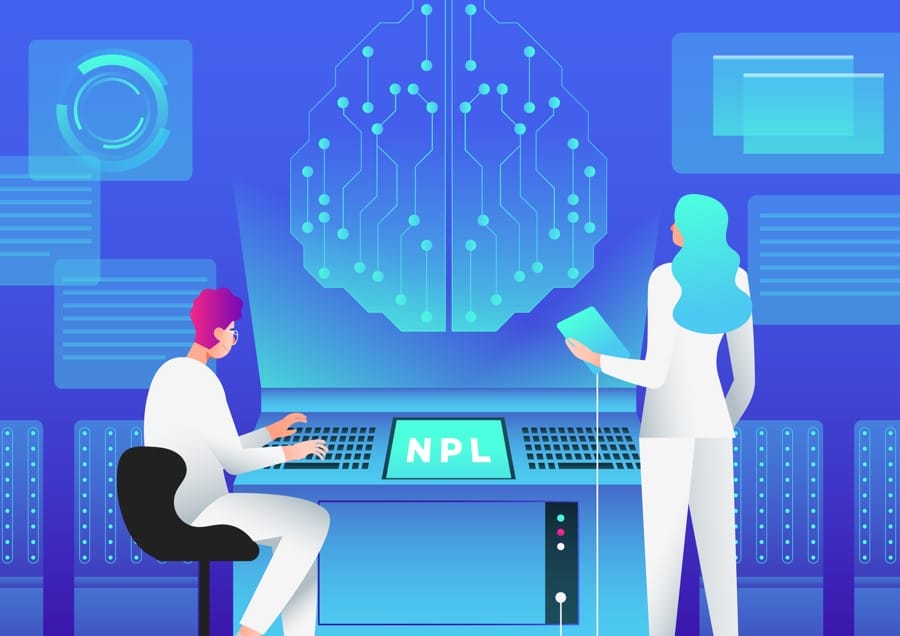AI as a transformative force in trading and highlighting the significance of trading psychology in understanding and managing the human aspect of decision-making. By setting the stage for the subsequent sections, the introduction ensures that the reader understands the primary themes of the paper and their importance in the context of financial markets.

- Overview of AI in Trading: In this subsection, we present a brief yet informative overview of how artificial intelligence has transformed the trading landscape. We discuss the various applications of AI in finance, such as algorithmic trading, quantitative analysis, and data-driven investment strategies. The emphasis here is on the role of AI in automating trading processes, handling massive amounts of data, and improving the speed and efficiency of decision-making.
- Importance of Trading Psychology: Here, we shift the focus to the human element in trading by discussing the critical role of trading psychology. We explain that while AI can process vast amounts of data and identify patterns, human emotions and biases significantly influence trading decisions. Traders often experience a range of emotions, such as fear, greed, and excitement, which can impact their ability to make rational choices. We emphasize that a deep understanding of trading psychology is essential for traders to manage their emotions effectively and make better decisions.
Part I: Understanding Trading Psychology

This section is dedicated to exploring the psychological aspects that influence traders’ decision-making processes. Understanding trading psychology is crucial because emotions and cognitive biases can significantly impact trading performance. By gaining insight into these psychological factors, traders can develop strategies to overcome emotional challenges and make more rational and disciplined decisions.
The Mind of a Trader
Psychological Biases: In this subsection, we delve into the various psychological biases that traders commonly encounter. These biases can lead to irrational decision-making and impact trading outcomes. Some of the common biases discussed include:
- Confirmation Bias: Traders tend to seek and favor information that confirms their pre-existing beliefs, ignoring contradictory evidence.
- Loss Aversion: Traders experience a stronger negative emotional response to losses compared to positive emotions from equivalent gains, leading to risk aversion.
- Overconfidence: Traders may overestimate their abilities and knowledge, leading to excessive risk-taking.
Emotional Rollercoaster: Here, we explore the emotional challenges that traders face during their trading journey. Trading can be an emotionally charged activity, and understanding the emotions that arise during different market conditions is essential. Some emotions commonly experienced by traders include:
- Fear: Fear can lead to indecision or avoidance of trading opportunities, potentially causing missed opportunities.
- Greed: Greed can lead to overtrading and taking excessive risks in pursuit of high returns.
- Regret: Regret may result from missed opportunities or poor trading decisions, leading to emotional stress.
Cognitive Biases and Decision Making
- Prospect Theory: This subsection introduces prospect theory, a fundamental concept in behavioral economics. Prospect theory explains how individuals evaluate potential gains and losses and how they make decisions under conditions of uncertainty. By understanding prospect theory, traders can better comprehend their risk tolerance and how they react to changes in market conditions.
- Framing Effect: The framing effect is a cognitive bias where individuals’ decisions are influenced by how information is presented to them. In the context of trading, the way information is framed can impact traders’ perceptions of market conditions and affect their decision-making. Understanding this bias helps traders become more aware of how they interpret and react to market news and events.
Part II: Integrating AI in Trading

This section delves into the integration of artificial intelligence (AI) technologies in the field of trading. AI has revolutionized the financial markets by enabling sophisticated algorithms and data-driven strategies. This part of the paper discusses various AI applications in trading and how they contribute to more efficient decision-making and improved trading outcomes.
Evolution of AI in Trading
- Historical Perspective: This subsection provides an overview of the historical development of AI applications in trading. It traces the evolution of AI from its early stages, where statistical models were used for basic market analysis, to more advanced machine learning techniques employed in algorithmic trading. The discussion highlights key milestones in the use of AI and how it has transformed the financial industry.
- High-Frequency Trading (HFT): High-Frequency Trading is a trading strategy that relies on the rapid execution of trades based on algorithms and data analysis. In this subsection, we explore how AI-driven HFT has revolutionized trading by processing vast amounts of market data and executing trades within milliseconds. We also discuss the impact of HFT on market liquidity, volatility, and market structure.
Machine Learning in Trading
- Supervised vs. Unsupervised Learning: This subsection explains the two primary categories of machine learning techniques used in trading. Supervised learning involves training algorithms on labeled data to predict outcomes, while unsupervised learning involves extracting patterns and relationships from unlabeled data. We discuss how these techniques are used for various trading applications, such as price prediction, anomaly detection, and portfolio optimization.
- Algorithmic Trading Strategies: Algorithmic trading refers to the use of pre-defined rules and mathematical models to execute trades automatically. In this part, we explore how machine learning algorithms can be used to create and optimize trading strategies. We discuss the advantages of using machine learning to adapt trading strategies dynamically based on changing market conditions.
Natural Language Processing (NLP)
- Sentiment Analysis: Sentiment analysis is a critical NLP application in trading. It involves the use of AI to analyze news articles, social media, and other sources to gauge market sentiment. By understanding market sentiment, traders can gain insights into the overall mood of market participants and make more informed trading decisions.
- Trading with NLP: This subsection explores the practical implementation of NLP in trading. We discuss how NLP-driven trading models can process vast amounts of textual data to detect relevant information that can impact asset prices. It emphasizes the importance of combining NLP with other AI techniques, such as machine learning, to develop effective trading strategies.
Part III: Synergies Between AI and Trading Psychology

This section of the paper examines the potential synergies that can be achieved by integrating AI technologies with the principles of trading psychology. By combining AI’s analytical capabilities with an understanding of human behavior and emotions, traders can make more informed decisions and overcome psychological biases that may hinder their performance.
Using AI to Overcome Psychological Biases
- Behavioral Finance and AI: This subsection explores how AI can be utilized to identify and mitigate psychological biases that traders commonly encounter. AI-driven analytics can detect patterns of biased decision-making in traders’ behaviors and provide personalized interventions to encourage more objective decision-making.
- Reinforcement Learning for Better Decisions: Reinforcement learning is a type of machine learning that involves learning from trial and error. By applying reinforcement learning techniques, AI systems can learn from traders’ past successes and failures, adjusting their strategies accordingly. This iterative learning process helps traders refine their decision-making over time.
Improving Decision-making with AI and NLP
- Sentiment Analysis Integration: This subsection builds on the previous discussion of NLP and sentiment analysis. It explores how integrating sentiment analysis with AI-driven trading models can lead to more informed decisions. By considering market sentiment alongside quantitative data, traders can gain a more comprehensive view of market conditions.
- Predictive Analytics: Predictive analytics involves using historical data and AI algorithms to forecast future market movements. By leveraging predictive analytics, traders can anticipate potential market shifts and adjust their strategies accordingly, reducing the impact of sudden price movements.
Part IV: Overview of AI in Trading

In this subsection, the focus is on introducing the concept of artificial intelligence (AI) in the context of financial trading. It begins by explaining what AI is and how it has been adopted in various domains, with a specific emphasis on its applications in the financial markets. The discussion may cover the following points:
- Definition of AI: Provide a concise definition of AI, explaining that it involves the development of computer systems capable of performing tasks that typically require human intelligence, such as data analysis, pattern recognition, and decision-making.
- AI in Finance: Highlight the increasing role of AI in the finance sector, driven by advancements in machine learning, big data processing, and computational power. Discuss how AI is being used in various financial applications, including portfolio management, risk assessment, fraud detection, and trading strategies.
- Algorithmic Trading: Explain the concept of algorithmic trading, which involves using pre-programmed algorithms to execute trades automatically based on specific conditions and criteria. Mention that AI plays a critical role in developing and optimizing these algorithms.
- Machine Learning and Predictive Analytics: Introduce the role of machine learning in finance, where algorithms learn from historical data and patterns to make predictions about future market trends and outcomes. Highlight the importance of predictive analytics in helping traders and investors make informed decisions.
Importance of Trading Psychology: This subsection emphasizes the significance of trading psychology in the context of financial trading. It explores the role of human emotions and cognitive biases in shaping traders’ decision-making processes. The discussion may cover the following points:
- Emotional Factors: Explain that trading is inherently emotional, as traders experience a wide range of emotions such as fear, greed, euphoria, and panic. These emotions can impact trading decisions and lead to irrational behavior.
- Cognitive Biases: Discuss common cognitive biases that traders may encounter, such as confirmation bias, overconfidence, and loss aversion. Explain how these biases can distort judgment and lead to suboptimal decisions.
- Behavioral Finance: Introduce the concept of behavioral finance, which combines psychology with finance to understand how psychological factors influence financial decision-making. Emphasize that trading psychology is an essential aspect of behavioral finance.
- Risk Management and Discipline: Highlight the importance of emotional control, risk management, and disciplined trading in achieving long-term success in the financial markets.
Long-Term Investment Decisions

AI-driven sentiment analysis and predictive analytics can be powerful tools for making informed long-term investment decisions. Here’s a more detailed explanation:
- Assessing Long-Term Market Trends: AI can analyze historical market data and macroeconomic indicators to identify long-term trends and patterns. By detecting emerging trends and potential shifts in market conditions, AI can provide investors with insights into which sectors or asset classes may outperform over an extended period.
- Macro-Factor Analysis: AI can process vast amounts of economic data, news, and geopolitical events to assess their potential impact on the economy and financial markets. This analysis can help investors understand how macroeconomic factors might influence long-term investment strategies.
- Strategic Portfolio Allocation: With the help of AI-driven predictive analytics, investors can optimize their portfolio allocation for the long term. By considering various risk factors, expected returns, and market trends, AI can suggest an optimal mix of assets that aligns with the investor’s risk tolerance and financial goals.
- Risk Mitigation: AI can help investors identify potential risks that may not be immediately apparent. By considering a wide range of historical and real-time data, AI can uncover correlations between asset classes and global events, helping investors build more robust and diversified portfolios.
Real-Time Market Sentiment Analysis:
Real-time market sentiment analysis using AI is a powerful tool for traders to adapt their strategies quickly to changing market conditions. Here’s a more detailed explanation:
- Social Media and News Analysis: AI can crawl through social media platforms, financial news outlets, and other online sources to gather real-time data on market sentiment. By analyzing sentiment expressed in tweets, news articles, and posts, AI can gauge the overall mood and perception of the market.
- Immediate Impact Assessment: With real-time sentiment analysis, traders can quickly assess how breaking news or events are influencing market sentiment. This information enables traders to make timely adjustments to their trading positions or take advantage of potential opportunities arising from sudden shifts in sentiment.
- Risk Management: Real-time sentiment analysis can be invaluable for risk management. By understanding how the market sentiment is evolving, traders can be more cautious during periods of heightened uncertainty or exuberance, thereby reducing exposure to potentially risky positions.
- Algorithmic Trading Adaptation: Traders who use algorithmic trading strategies can integrate real-time sentiment analysis into their systems. By considering sentiment signals alongside other market indicators, algorithms can make more informed decisions and adapt to changing market conditions.
Ethical Considerations

When applying AI in trading psychology, several ethical considerations must be taken into account to ensure fair and responsible use of the technology. Here’s a more detailed explanation:
- Transparency and Explainability: AI-driven systems must be transparent and provide clear explanations for their recommendations or decisions. Traders and investors should be able to understand the underlying rationale and data sources behind AI-generated insights.
- Bias Mitigation: AI models can inadvertently perpetuate biases present in the data they are trained on. It is crucial to actively monitor and mitigate any biases in the AI algorithms to ensure fair treatment of traders and investors from diverse backgrounds.
- Data Privacy: Real-time sentiment analysis involves processing vast amounts of data, including social media and news content. It is essential to handle this data responsibly and ensure compliance with data privacy regulations to protect the privacy of individuals and organizations.
- Emotional Manipulation: AI systems must not be designed to manipulate or exploit traders’ emotions for financial gain. Instead, the focus should be on providing support and insights that help traders make better decisions and manage their emotions effectively.
- Human Oversight: While AI can provide valuable insights, it should not replace human judgment entirely. Human traders and investors should maintain oversight and control over their trading decisions, with AI serving as a supportive tool rather than a decision-maker.
Conclusion
The integration of AI and Trading Psychology heralds a new era of decision-making in the financial markets. By fusing the analytical prowess of AI with the nuances of human behaviour, traders and investors stand to gain a competitive edge in navigating the complex and often volatile financial landscape. This synergy exemplifies the power of technology in amplifying human potential, marking a paradigm shift that has the potential to redefine the way we approach trading and investment. As this fusion continues to evolve, it is imperative that its implementation remains guided by ethical principles and a commitment to prioritizing traders’ well-being, ushering in a future where AI and human intelligence coalesce to shape more informed, balanced, and successful trading decisions. he convergence of AI and Trading Psychology births a new paradigm of possibilities, where AI becomes an ally in the pursuit of mastering one’s emotions and biases. The integration of emotional AI, such as emotion recognition and emotional chatbots, lends traders a helping hand in managing their emotional states. Real-time monitoring of emotions and timely interventions can prevent impulsive decisions and foster a disciplined approach to trading.
Don’t trade all the time, trade forex only at the confirmed trade setups.
Get more confirmed trade setups here: forexgdp.com/buy/
